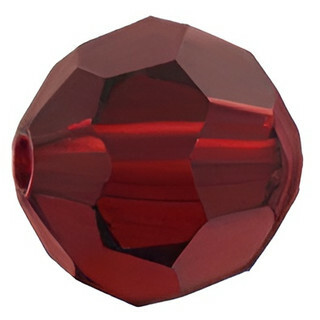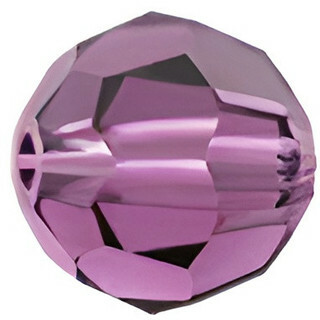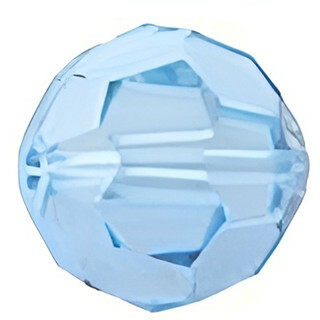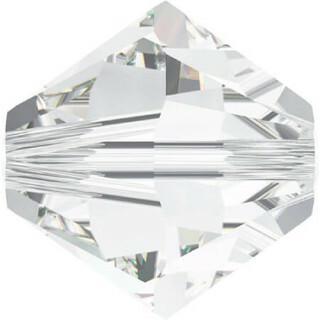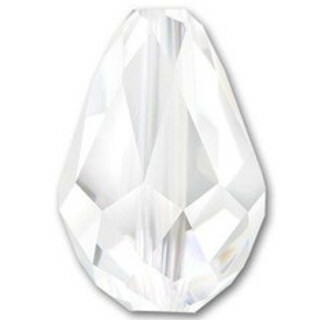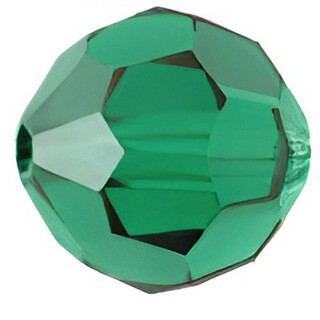Celebrate the birth months of you and your loved ones with the timeless beauty and special meaning behind each birthstone color.
A birthstone is a gemstone associated with a specific month of the year, believed to hold symbolic meaning and unique properties for individuals born during that month. Traditionally, birthstones are thought to bring good luck, protection, health and personal benefits to the wearer, such as enhancing specific traits or energies. The concept of birthstones dates back to ancient times, with roots in astrology and biblical traditions, and continues to be cherished today as a way to celebrate one's birth month or as meaningful jewelry gifts. This section outlines some of the background and history of the natural gems, including their symbolism, in order to help you select crystals that carry the same meanings for your projects, without the hefty prices of real gemstones.
Explore the significance and beauty of birthstone colors—each stone offering a unique connection to your birth month and personal journey.
January – Garnet
February – Amethyst
March – Aquamarine
April – Diamond/Crystal
May – Emerald
June – Light Amethyst/Pearl/Alexandrite
July – Ruby
August – Peridot
September – Sapphire
October – Rose
November – Topaz
December – Blue Zircon
January - Garnet
Garnet symbolizes protection, passion, and vitality. The deep red color is associated with love, energy, and courage.
One glance at the deep red seeds nestled inside of a pomegranate fruit explains why the word "garnet" comes from the Latin word "granatus," meaning "grain" or "seed." This name was given to the garnet because of its close resemblance to the succulent pomegranate seed.
There are many myths and legends surrounding the garnet. One Biblical legend is that Noah hung this gem on the ark to light his way through the dark and stormy nights of God's wrath. A Greek myth linked to the garnet is the story of the young goddess of sunshine, Persephone, who was abducted by Hades, god of the underworld. Hades eventually released Persephone, but not before he tricked her into eating some pomegranate seeds, which guaranteed her return to him for three months out of every year. During these three months that Persephone spent in the underworld, the sun became weak, plants died, and the world became cold, leading to what humans experience as winter.
The garnet is also known to be protective of journeyers. A gift of garnet is thought to be symbolic of love and the desire for a loved one's safe travel and speedy homecoming.
February - Amethyst
Amethyst represents peace, clarity, and spiritual growth. The color purple is often associated with royalty, wisdom, and calmness.
If gazing into the sparkling purple depths of an Amethyst suffuses you with a sense of powerful well-being, this is only to be expected. The ancient Greeks believed that Amethyst held many powers, among them protection against intoxication. In fact, the word Amethyst comes from the Greek word "amethystos," meaning sober. This stone was associated with, Dionysus, the god of wine, and it was common practice to serve this beverage from Amethyst goblets in the belief that this would prevent overindulgence. Even today, Amethyst is considered a stabilizing force for those struggling to overcome addictive behaviors.
February's purple birthstone has been found among the possessions of royalty throughout the ages. The intense violet hue of Amethyst appealed to early monarchs, perhaps because they often wore this color. Purple dye was scarce and expensive at one time, and so it was reserved for the garments of kings and queens. Amethyst is also symbolic of spirituality and piety. It has been used to ornament churches and crosses used in religious ceremony, and worn in rings and on rosaries by bishops and priests.
The gift of Amethyst is symbolic of protection and the power to overcome difficulty. It is said to strengthen the bond in a love relationship. Whether or not Amethyst holds such power, its stunning beauty will certainly make anyone who wears it feel like royalty!
A gift of Aquamarine symbolizes both safety and security, especially within long standing relationships. Some people even say that the Aquamarine reawakens love in a tired marriage, so if you want to bring back that spark in your partner's eyes, you might consider this gem as an anniversary gift!
April - Crystal/Diamond
Shine bright like a diamond this April, a symbol of eternal love, strength, and clarity.
April's birthstone is remarkably simple in composition, yet stunning in its unique ability to reflect and refract light into vivid flashes of brilliant color. The ancient Hindus called the Diamond "Vajra," meaning lightening, both because of the sparks of light thrown off by this gem as well as its invincible strength.
A gift of a Diamond is symbolic of everlasting love. There is no more convincing a promise of an enduring relationship than the brilliant gemstone that has endured in people's hearts throughout the ages.
ELITE Eureka Crystals are specially created in order to maximize light refraction and are available in special metallic coatings such as Aurora Borealis (AB) which gives the surface a rainbow oil slick appearance, coming close to resembling the brilliance and shine of natural diamonds for a fraction of the price – perfect for opulent evening jewelry.
May - Emerald
Emeralds stand for renewal, growth, and prosperity. The vibrant green color is linked to nature and rebirth.
Spring is a time of new growth and rebirth. And the intense brilliant green of the Emerald, May’s birthstone, is as refreshing to the eyes as a spring garden after a rain. The Egyptians were known to engrave Emeralds with the symbol for foliage to represent eternal youth, and to bury these jewels with those who have passed. The ancient Romans associated this gemstone with fertility and rebirth, and dedicated it to Venus, the goddess of love and beauty.
The Ancient Egyptians mined Emeralds in the eastern desert region 2,000 years before Cleopatra’s birth, braving extreme heat, scorpions and snakes to search for the beautiful crystals. During Cleopatra’s reign, she claimed the Emerald mines as her own, as this was her favorite gem. She often wore lavish Emerald jewelry, and it is said that she bestowed visiting dignitaries with large Emeralds carved with her likeness when they departed Egypt.
Some people believe that wearing an Emerald brings wisdom, growth, and patience. And as any couple in a long-term relationship would agree, all of these qualities are essential for a successful and lasting love. This may explain why a gift of Emerald for an anniversary -- or anytime -- is considered symbolic of love and fidelity.
June - Light Amethyst/Pearl/Alexandrite
From the gentle lavender glow of Light Amethyst to the classic elegance of Pearl and the ever-changing beauty of Alexandrite, June's stones offer versatility and grace.
Light Amethyst: Calmness and emotional balance.
Pearl: Purity, wisdom, and integrity.
Alexandrite: Transformation and adaptability.
When using crystals, the traditional birthstone for June has always been considered to be Light Amethyst which is a lighter shade of Amethyst and it’s properties and history are similar to Amethyst as described under January. Ancient civilizations had many stories to explain the origin of June's birthstone, such as the Greek belief that pearls were the hardened tears of joy that the goddess of love shook from her eyes as she was born from the sea. According to Arab legend, pearls were formed when oysters were lured from the depths of the ocean by the beautiful moon and then swallowed moonlit dewdrops. The Ancient Chinese thought that these gems originated from the brains of dragons. These gems come in a variety of colors, from pure white to pink, yellow, gray and black. They also come in different shapes and sizes.
Only those with royal status once wore pearl jewelry, but eventually these gems were seen among all classes of people. They continue to be viewed as a mark of taste and refinement as well as a symbol of purity, and they are often given to celebrate a marriage or the birth of a child. Pearls are nature's perfect gift, suitable for all ages and elegantly worn with everything from jeans to an evening gown.
An alternate birthstone for June is Alexandrite. This gemstone has the unique characteristic of changing colors under different lighting, going from cool blue or greenish to warmer violet or sometimes even red. Because of this quality, it has been characterized by poets as "an emerald by day, a ruby by night." It is a rare and expensive gemstone, symbolic of joy and good fortune. Preciosa's Alexandrite crystals mimic the properties of natural Alexandrite, appearing violet under incandescent light and sunlight and light blue under fluorescent light.
July - Ruby

Celebrate with the fiery red of Ruby, a gemstone that radiates passion, vitality, and bold confidence
Like a perfect red rose, the Ruby's rich color speaks of love and passion. Called the "Rajnapura" or King of Gems by ancient Hindus, July's birthstone is among the most highly prized of gems throughout history. The Ruby was considered to have magical powers, and was worn by royalty as a talisman against evil. It was thought to grow darker when peril was imminent, and to return to its original color once danger was past—provided it was in the hands of its rightful owner!
The word Ruby comes from the Latin "ruber," meaning red. This gem comes in a variety of colors, and is considered a Sapphire in any color except red, which is designated as a Ruby. Rubies range in hue from an orangey red to a purplish red, but the most prized gems are a true red in color. Large sized Rubies are very rare and valuable.
It has been said that the Ruby's red glow comes from an internal flame that cannot be extinguished, making a gift of this stone symbolic of everlasting love. When worn on the left hand, ancient lore has it that the Ruby will bring good fortune to its wearer, too!
August - Peridot
Bring some sunshine into your life with the vibrant green of Peridot, a stone known for its healing and rejuvenating energy. Peridot represents abundance and positivity.
Many years ago, native Hawaiians discovered Peridot crystals in the black sands of Hawaii, explaining their presence as tears shed by Pele, the volcano goddess. Throughout history, August's birthstone has been used as a means to connect with nature.
The name Peridot comes from the Arabic word "faridat," meaning gem. Ancient Egyptians called them the "gem of the sun," because of their dazzling brilliance when seen in the desert sun. Peridot is sometimes called the “evening emerald."
The green crystal was considered protective against evil and when set in gold, especially helpful against night terrors. The force of nature is alive within a Peridot, making a gift of this stone symbolic of vitality. It signifies strength, both individual and within a relationship, as well as the promise of new growth in years ahead.
September - Sapphire
Find wisdom and serenity in the deep blue of Sapphire, a stone that represents truth, loyalty, and inner strength.
The striking deep blue of a quality sapphire is reminiscent of a cloudless sky. Ancient civilizations believed that the world was set upon an enormous sapphire, which painted the sky blue with its reflection. This legend, as well as the belief that the Ten Commandments were inscribed upon tablets made of sapphire, gives September’s birthstone a royal place among gemstones.
Named after the Greek word "sapphirus", meaning blue, Sapphires have long been a favorite among priests and kings, who considered them symbolic of wisdom and purity.
A gift of Sapphire represents sincerity and faithfulness. As nourishing to the soul as gazing up at the sky on a summer day, this brilliant blue gemstone is truly a heavenly choice!
October - Rose
Soft and romantic, the warm pink hues of Rose Quartz symbolize love, peace, and emotional healing.
Pink is the color of universal love, emotional love of self and others, friendship, affection, harmony and inner peace. Wearing October’s birthstone crystal, Rose, around the people you care about is said to help relationships grow or heal if they need to. Rose will help to strengthen love for yourself and for others and giving it as a gift is the ultimate way to make love grow!
November - Topaz
Light up your life with the golden warmth of Topaz, a stone that symbolizes abundance, strength, and confidence.
Topaz is the birthstone for those born in November. The word is derived from the Sanskrit word "tapas," meaning fire. It's golden color was believed by the Egyptians to be the glow cast by the sun god Ra and was considered to be a very powerful amulet that protected the faithful against harm.. Topaz ranges in color from a peachy blush to a deep cognac. A gift of this gemstone is said to symbolize friendship and to strengthen one's capacity to give and receive love.
December - Blue Zircon
Blue Zircon represents wisdom, tranquility, and prosperity. Its vivid blue color is associated with peace and good health.
As cool and inviting as a blue lake on a blistering summer day, December's birthstone, blue zircon, has been known for hundreds of years, even being mentioned in the bible. Ancient Greek legend has it that when a youth named Hyacin was killed, a blue hyacinth flower grew from his spilled blood. The blue zircon found in Greece matched the blue of the flower and Pliny the Elder linked the stone with this legend in his essay on the comparison of colors. A gift of Blue Zircon is symbolic of love and fidelity.








